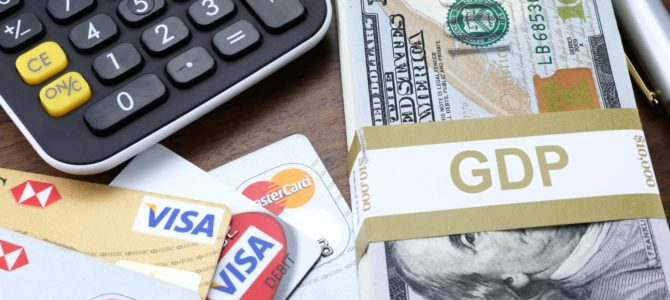Amid an economy inflated from massive government handouts and supply chain disruptions, U.S. gross domestic product (GDP) increased at a 6.5 percent annual rate in the second quarter of 2021, falling significantly short of federal projections.
The Commerce Department’s report released Thursday indicated U.S. GDP did not surge from April to June after the first quarter’s 6.3 percent annual growth rate, despite expectations. Wall Street analysts forecasted an 8.5 percent growth rate for that period, even though the recorded economic output is now higher than prior to COVID-19 and lockdowns.
“The above-trend growth in the second quarter reflected the continued reopening of the U.S. economy and government support via business loans, stimulus checks and extended unemployment benefits,” reported Fox Business.
GDP, a figure representing the value of all goods and services produced in the country, is one way to estimate the economic health of a country. Major reasons for the lower-than-expected growth in the last quarter, said analysis, are supply bottlenecks and labor shortages.
“The process of reopening the economy is unprecedented, as was the shutdown at the onset of the pandemic,” Federal Reserve Chairman Jerome Powell said Wednesday. “As the reopening continues, bottlenecks, hiring difficulties, and other constraints could continue to limit how quickly supply can adjust, raising the possibility that inflation could turn out to be higher and more persistent than we expect.”
From May to June, the U.S. trade deficit increased by 3.5 percent to $91.2 billion, according to a report by the U.S. Census Bureau released Wednesday.
The second quarter saw lessening inventories, which subtracted by close to 1.1 percentage points from growth as a whole. For instance, recent U.S. Energy Information Administration data showed crude-oil inventories were down by 4.1 million barrels. Inventories sunk by $166 billion in total.
The Bureau of Economic Analysis described how the spike in consumer prices, which is up 5.7 percent quarter-to-quarter, reflects inflation surging after months of lockdowns and stimulus checks. Energy and food prices increased by 20.6 percent and 2 percent, respectively.
Paul Ashworth, the chief U.S. economist at Capital Economics, told Fox Business that Thursday’s report provides “more evidence that stimulus provided surprisingly little bang for its buck, with the economy quickly pushing against unexpected supply constraints instead, which have driven inflation higher.”









